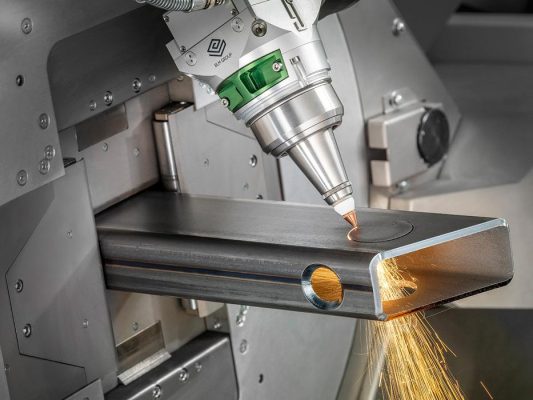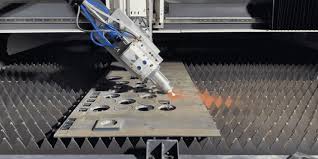pipe laser cutting price calculation
Pipe laser cutting can vary significantly depending on several factors. Here’s a breakdown of the key elements that influence pricing:

1. Material Type and Thickness
- Material Type: Different materials have varying cutting characteristics. For instance, stainless steel and titanium often require higher laser power and slower cutting speeds, which can increase costs. Additionally, certain materials may require specialized nozzles or cutting gases, further affecting the price.
- Thickness: Thicker materials generally require more laser energy and longer cutting times, leading to higher prices. However, the relationship between thickness and cost is not always linear. For example, cutting very thin materials can be challenging due to the risk of material distortion or burn-through, which may require slower cutting speeds and increased complexity.
2. Pipe Diameter and Length
- Diameter: Larger pipe diameters require larger cutting nozzles and may necessitate adjustments to the laser power and cutting speed, affecting costs. Additionally, larger pipes can be more difficult to handle and position accurately, potentially increasing labor costs.
- Length: Longer pipes can increase cutting time and material handling costs. However, the impact of pipe length on pricing can vary depending on the cutting machine’s capacity and the efficiency of the material handling system.
3. Cutting Complexity
- Shape: Complex shapes with intricate details or sharp corners may require more precise cutting and programming, leading to higher prices. For example, cutting bevels or miters can be more challenging than cutting straight cuts, as it requires careful alignment and positioning of the pipe.
- Tolerances: Tight tolerances for dimensions and surface finish can demand more careful cutting and inspection, potentially increasing costs. For instance, if a pipe needs to be cut to a very precise length or with a specific chamfer, the cutting process may require additional steps or adjustments to ensure accuracy.
4. Cutting Speed
- Desired Speed: Faster cutting speeds can reduce processing time but may require higher laser power or compromise cut quality. The optimal speed depends on the material, thickness, and desired tolerances. Additionally, faster cutting speeds can increase the risk of thermal distortion, especially for thin-walled pipes.
5. Laser Type and Power
- Laser Type: CO2 lasers are commonly used for cutting non-metallic materials, while fiber lasers are more suitable for metals. The choice of laser type can influence costs. For example, fiber lasers are generally more efficient and have higher beam quality than CO2 lasers, which can lead to lower operating costs and better cut quality.
- Laser Power: Higher laser power is generally required for thicker materials and faster cutting speeds. A more powerful laser may increase equipment costs and energy consumption. However, the relationship between laser power and cost is not always linear. For instance, using a higher laser power than necessary may not result in significant productivity gains and could even lead to increased operating costs.
6. Cutting Nozzle and Gas
- Nozzle Type: The cutting nozzle plays a crucial role in directing the laser beam and controlling the cutting process. Different nozzle types may be required for various materials and thicknesses. For example, cutting stainless steel may require a different nozzle type than cutting mild steel, due to the different material properties.
- Cutting Gas: Assist gases, such as oxygen or nitrogen, are often used to enhance the cutting process. The type and flow rate of the gas can affect costs. For example, using oxygen as a cutting gas can increase the cutting speed and improve the cut quality, but it can also increase the risk of material oxidation.

7. Machine Efficiency and Maintenance
- Machine Efficiency: The efficiency of the laser cutting machine can impact production time and energy consumption. Well-maintained machines tend to be more efficient and cost-effective. Factors that can affect machine efficiency include the age and condition of the machine, the quality of the maintenance, and the operating conditions.
- Maintenance Costs: Regular maintenance and calibration of the laser cutting machine are essential for optimal performance and reliability. Maintenance costs can contribute to the overall operating costs. These costs can vary depending on the age of the machine, the frequency of maintenance, and the complexity of the maintenance tasks.
8. Labor Costs
- Operator Skill: Skilled operators can optimize cutting parameters and minimize waste, reducing labor costs. Well-trained operators can also identify and address potential problems before they become major issues, reducing downtime and increasing productivity.
- Labor Rates: The prevailing wage rates in the region can influence labor costs. Labor costs can vary significantly depending on the location of the laser cutting facility, the industry sector, and the specific job requirements.
9. Overhead Costs
- Facility Costs: Rent, utilities, and insurance can contribute to overhead costs. These costs can vary depending on the location of the facility, the size of the facility, and the specific services offered.
- Administrative Costs: Costs associated with management, administration, and support staff can also impact pricing. These costs can include salaries, benefits, office supplies, and other administrative expenses.
By understanding these factors, you can better assess the pricing of pipe laser cutting services and make informed decisions. It is advisable to consult with laser cutting service providers to obtain specific quotes based on your project requirements.
Pipe laser cutting price Table
| Material | Pipe Diameter (mm) | Wall Thickness (mm) | Cutting Length (m) | Price per Ton (USD) | Total Price (USD) |
|---|---|---|---|---|---|
| Carbon Steel | 50 | 3 | 5 | 300 | 75 |
| Stainless Steel | 80 | 4 | 10 | 400 | 200 |
| Aluminum | 60 | 2 | 7 | 450 | 157.5 |
| Mild Steel | 100 | 5 | 8 | 320 | 256 |
| Copper | 40 | 3 | 12 | 370 | 444 |
